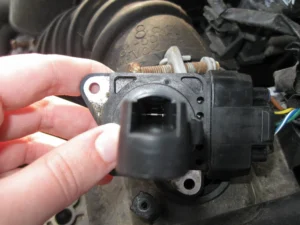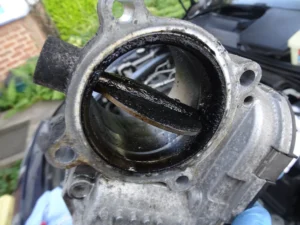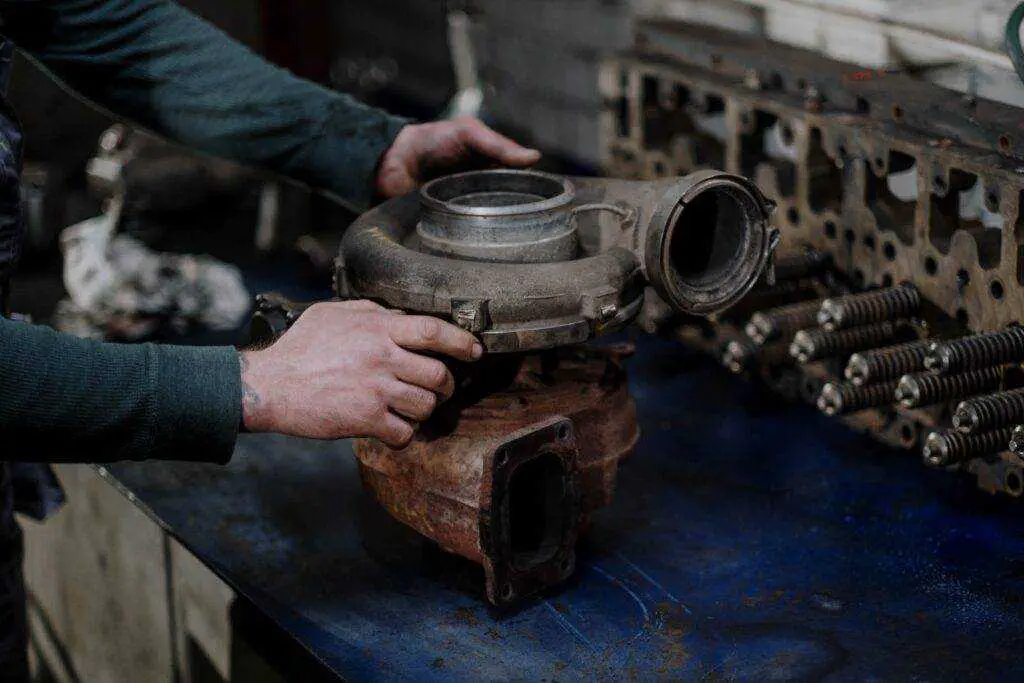A delayed response when pressing the accelerator pedal can be a frustrating and even dangerous issue for drivers. When you press down on the gas pedal, you expect the vehicle to accelerate smoothly and promptly. However, if there is a lag between pressing the pedal and feeling the acceleration, it can make driving difficult and reduce control of the vehicle. In this comprehensive guide, we’ll explore the various causes of and solutions for delayed response when pressing the accelerator.
What Causes Delayed Response When Pressing Accelerator?
Several potential culprits can lead to delayed acceleration when you hit the gas pedal:
Worn Engine Components
Delayed Response When Pressing Accelerator. Over time, the internal components of the engine wear down and lose efficiency. This includes the piston rings, cylinders, valves, and other moving parts. As these components become worn, compression and performance start to suffer. This can translate to sluggish throttle response as the engine struggles to produce power. Excessively worn pistons, cylinders, and piston rings allow compression leaks and engine misfires. This can cause noticeable jerking or sputtering while driving at a steady speed.
Worn Engine Components Causing Delayed Throttle Response
- Pistons, rings, cylinders – As the internal moving parts like pistons, piston rings, and cylinder walls wear down from friction over time, compression and engine efficiency become reduced. This decreases the engine’s overall power output capacity, resulting in sluggish or delayed response when pressing the accelerator.
- Valves and lifters – Excessive wear and tear on the intake and exhaust valves prevents them from seating fully and sealing properly. This allows compression leaks during combustion, reducing compression efficiency. Worn valves and lifters also throw off valve timing, which hampers throttle response.
- Bearings – The main bearings, connecting rod bearings, and camshaft bearings are all susceptible to wear over time. Excessively worn bearings allow too much internal engine movement and play. This lack of precision negatively affects combustion timing and causes delayed response when pressing the accelerator pedal.
- Dirty air filter – Debris buildup and restrictions in the air filter limit the amount of airflow into the engine. Reduced oxygen flow starves the engine of air needed for proper fuel combustion. This limits engine output and power delivery when accelerating.
- Blocked ducts – Obstructions, kinks, or collapsed hoses in the intake ductwork leading from the air filter to the throttle body constrict airflow. These intake restrictions mean less air reaches the cylinders, reducing engine response when the accelerator is pressed.
- Failing fuel pump – Worn fuel pump impeller bearings or brushes reduce the amount of fuel pressure and volume the pump can deliver to the engine. This lack of fuel flow, especially when accelerating, leads to a sluggish response from the engine.
- Clogged fuel filter – The fuel filter can collect debris over time, restricting the fuel flow from reaching the fuel injectors. This shortage of fuel when the accelerator is pressed causes reduced engine output and delayed response.
- MAF, MAP, O2 sensors – Inaccurate readings from key sensors like the mass air flow (MAF), manifold absolute pressure (MAP), and oxygen (O2) sensors provide incorrect intake air and engine operational data to the vehicle’s computer. This can confuse the computer and cause delayed accelerator response.
- TPS (Throttle Position Sensor) – A faulty electronic throttle position sensor (TPS) can give inaccurate readings to the computer about how far the accelerator is being pressed. This prevents proper fueling for the intended throttle position, leading to a sluggish response.
Solutions for Delayed Response When Pressing Accelerator
Now that we’ve explored the array of issues that can cause delayed response when pressing the accelerator, let’s look at solutions:
Test Accelerator Cable
- The cable that connects the accelerator pedal to the throttle body should move smoothly without sticking. A bad accelerator cable prevents the throttle from opening as commanded. Testing the cable and replacing it if needed gets the pedal-to-throttle linkage working properly.
Clean Mass Airflow Sensor
- The mass airflow sensor calculates intake air volume. Delayed Response When Pressing Accelerator Contaminants on the sensor can provide faulty readings to the computer. Cleaning the sensor removes dirt buildup and improves its accuracy in measuring air intake.

Use Fuel System Cleaner
- Adding a fuel system cleaner regularly helps remove deposits in the fuel injectors, combustion chambers, valves, and intake tracts. Keeping these areas clean optimizes combustion timing and power output for better acceleration. Be sure to dispose of any leftover old gasoline properly, such as at approved hazardous waste facilities. Never pour fuel directly into the ground or a drain.
Change Engine Oil
- Delayed Response When Pressing Accelerator. Dirty oil loses its ability to lubricate and coat engine components effectively. New, clean oil reduces friction and prevents engine sludge from forming. Regular oil changes help keep the engine internals clean for strong performance and prevent Delayed Response When Pressing the Accelerator.
Replace PCV Valve
- The PCV (positive crankcase ventilation) valve regulates vapors in the crankcase. A stuck open PCV valve can upset the air/fuel ratio and create a vacuum leak. Replacing the valve restores proper ventilation and idling.
Clean Throttle Body
- Carbon deposits inside the throttle body can prevent the throttle plate from opening fully. This restricts airflow into the engine, limiting power output and causing delayed response when pressing the accelerator. Cleaning the throttle body removes these deposits and allows a full range of motion.


Replace Map Sensor
- The manifold absolute pressure (MAP) sensor reports intake air pressure data to the computer. A faulty MAP sensor provides incorrect readings that upset fuel delivery and delayed response when pressing the accelerator. A new MAP sensor restores precise monitoring of intake air.
Turbo Charger Issues can be caused by delayed response when pressing the accelerator
Turbocharger wear can lead to oil leaking into the intake and intercooler system. This causes acceleration and oil consumption problems.
Pressing the pedal to the floor but feeling hardly any acceleration is a clear sign of major throttle response issues.
Summary
Delayed response when pressing the accelerator is a common drivability issue with many culprits. Worn engine components, clogged filters, vacuum leaks, and faulty sensors are just some of the possible causes. By methodically checking fuel, airflow, sensors, ignition, and computer systems, the root cause can be diagnosed. Often, something as simple as replacing worn parts, cleaning components, or updating computer programming is all that’s needed to restore brisk, responsive acceleration when hitting the gas pedal. With vigilance and proper maintenance, drivers can continue to enjoy the smooth and spirited throttle response from their vehicle’s accelerator pedal.
Frequently Asked Questions
Still, have questions about diagnosing and fixing sluggish pedal response? This FAQ covers additional details:
What is throttle response?
Throttle response refers to the time delay between pressing the accelerator pedal and feeling the vehicle accelerate. Good throttle response means the vehicle accelerates briskly in sync with pedal input. A delayed response means there is a noticeable lag or hesitation when accelerating.
Why is throttle response important?
Prompt throttle response gives the driver precise control of the vehicle’s speed and acceleration. This makes driving, merging, and passing smoother and safer. Delayed response reduces control, making the vehicle feel sluggish and unresponsive.
Can throttle response be improved?
Yes, the throttle response can be improved through maintenance, cleaning, part replacement, and computer resets. Identifying and addressing the specific issues causing the delayed response restores brisk, responsive acceleration.
Does higher octane gas improve response?
Sometimes. If engine knock or pre-ignition is causing sluggish acceleration, switching to higher-octane gasoline can help. But if other issues like clogged injectors are the root cause, higher octane alone won’t cure delayed response.
What is the fastest way to improve throttle response?
The fastest improvements come from cleaning dirty components like the air filter, fuel injectors, and throttle body. These instantly increase airflow and combustion efficiency for better response. Tuning the engine computer also quickly optimizes parameters for crisper throttle response.
Can a worn engine cause poor throttle response?
Yes, worn internal engine components reduce compression, airflow, and combustion efficiency, which diminish throttle response. Rebuilding or replacing very worn engines is required to completely restore lost performance in some cases.
Does driving style affect throttle response?
Yes, habits like resting your foot on the brake pedal when not braking, can affect response. Heavier acceleration before allowing the engine to fully warm up also hinders response. Learning proper driving techniques improves pedal response.
How often should I clean fuel and air systems?
Most mechanics recommend a fuel system cleaning service every 15,000 – 20,000 miles or once annually to prevent delayed response when pressing the accelerator. Replacing air filters depends on usage but often falls around 10,000 – 15,000 miles. Check the owner’s manual intervals.
Can computer tuners improve throttle response?
Yes, many aftermarket tuning devices can adjust computer settings to optimize throttle response. But tuners should only be used after resolving any underlying maintenance issues first. Proper tuning then sharpens acceleration and restores the delayed response when pressing the accelerator.
Conclusion
Crisp throttle response is essential for driving enjoyment and safety. While degraded response over time is normal, drivers should address problems as they arise. Following the maintenance schedule and watching for sluggish symptoms allows issues to be corrected before they worsen. With consistent care for your engine and systems, you can continue to enjoy the smooth acceleration response your vehicle was designed to deliver. Focus on addressing any delayed response when pressing the accelerator right away and keep your pedal-to-road connection in top form.





